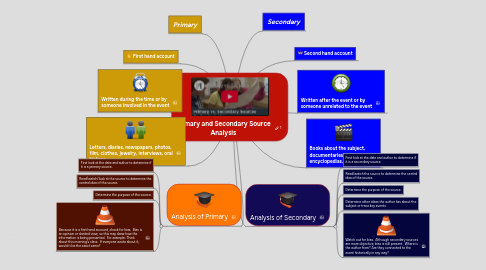Primary and Secondary Source Analysis
by Taylor Kruger

1. Primary
2. First hand account
3. Written during the time or by someone involved in the event
4. Letters, diaries, newspapers, photos, film, clothes, jewelry, interviews, oral history.
5. Analysis of Primary
5.1. First look at the date and author to determine if it is a primary source.
5.2. Read/watch/look at the source to determine the central idea of the source.
5.3. Determine the purpose of the source.
5.4. Because it is a first hand account, check for bias. Bias is an opinion or slanted view, so this may skew how the information is being presented. For example: Think about this morning's class. If everyone wrote about it, would it be the exact same?
6. Secondary
7. Second hand account
8. Written after the event or by someone unrelated to the event
9. Books about the subject, documentaries, encyclopedias, textbooks.
10. Analysis of Secondary
10.1. First look at the date and author to determine if it is a secondary source.
10.2. Read/watch the source to determine the central idea of the source.
10.3. Determine the purpose of the source.
10.4. Determine other ideas the author has about the subject or trace key events.
10.5. Watch out for bias. Although secondary sources are more objective, bias is still present. Where is the author from? Are they connected to the event historically in any way?


